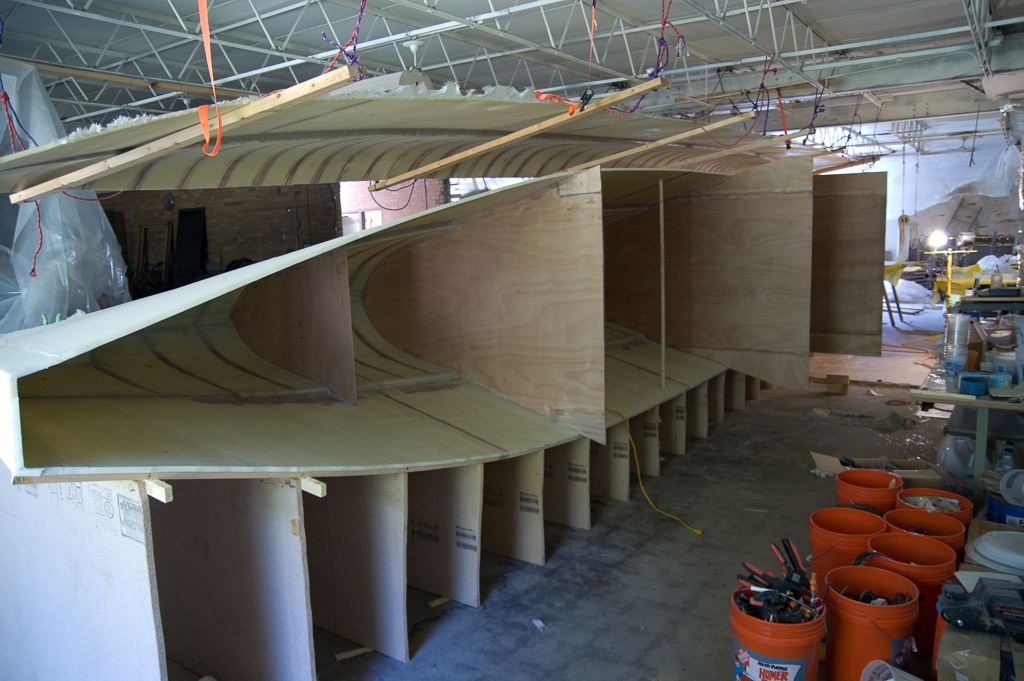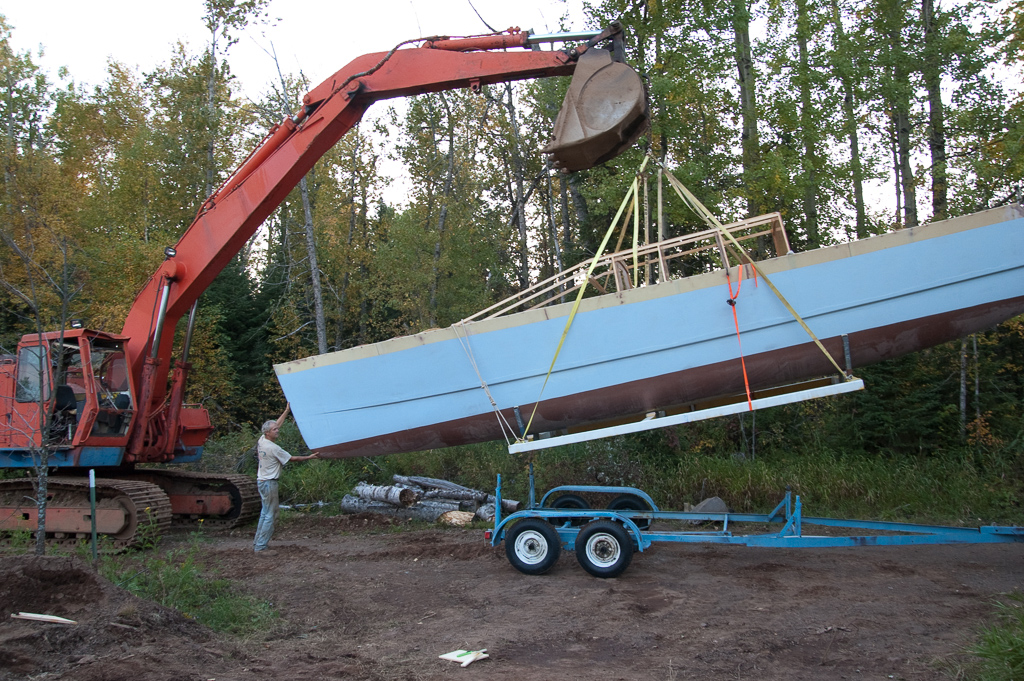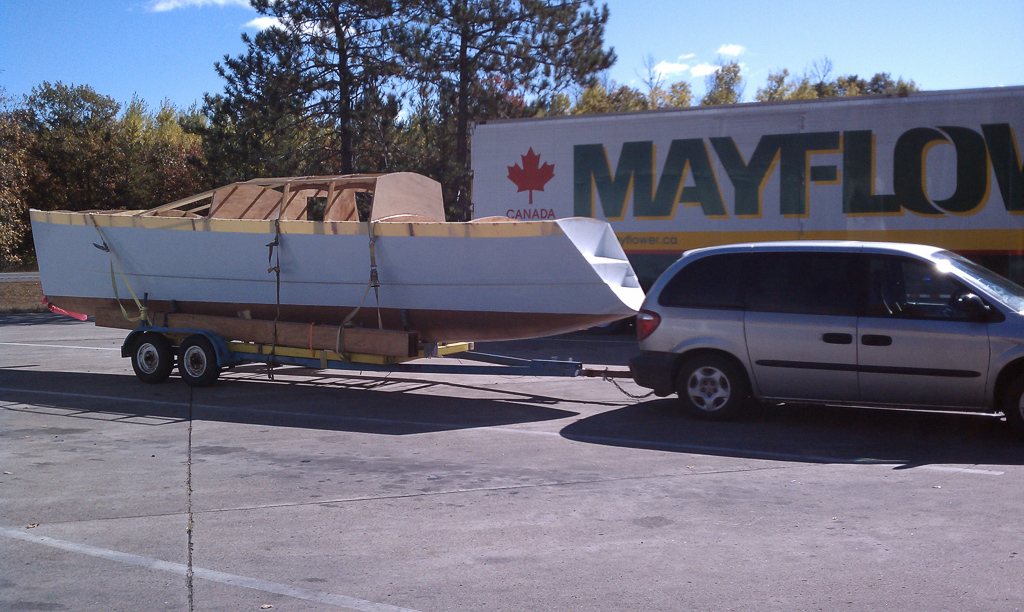I built the hulls from 12mm corecell and 2 layers of 400g/m2 +- 45 biax inside and out. I used Raka’s 5:1 (highest strength and heat tolerance) epoxy for the hulls. I can hardly remember the reason, but I decided to build with a half female mold. Imagine taking an upright boat and cutting it in half lengthwise right down the centerline. You’d have 2 mirrored pieces. In the case of a catamaran, I had 4 hull halves. I brought them together and fitted the interior while they were still laying on the side. I built the round bilge(bottom) version of the boat. While it’s a slightly faster boat and I like the small knuckle that does a nice job of deflecting spray, it took longer to build. It’s one of those decisions that I regret since it probably added at least a full season to the build time. It’s water under the bridge hull.
a big pile of core-cell. The guts of the hull foam sandwich.

and then some temporary frames from 3/4 particle board


Apply core-cell

glass interior and bring the halves together

fit interior bulkheads while the hull was on its side for easier access

flip hulls upside down
and glassed the outside, sanded, flipped, painted.

This is my uncle John and one of his big machines gently setting a hull onto a trailer. I’m still amazed how perfectly the whole thing fit together and he welded it up in an afternoon. pro.

The hulls themselves don’t weigh much, and I had no problems towing them with his minivan. The truck was fine, but my nerves were on edge the whole trip.

